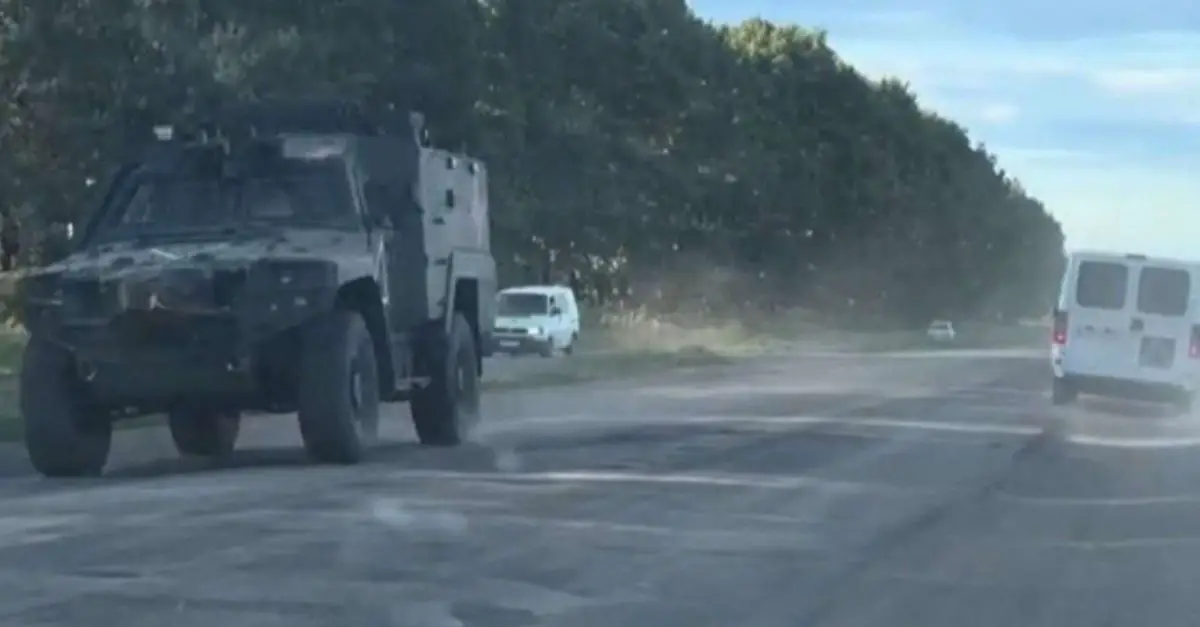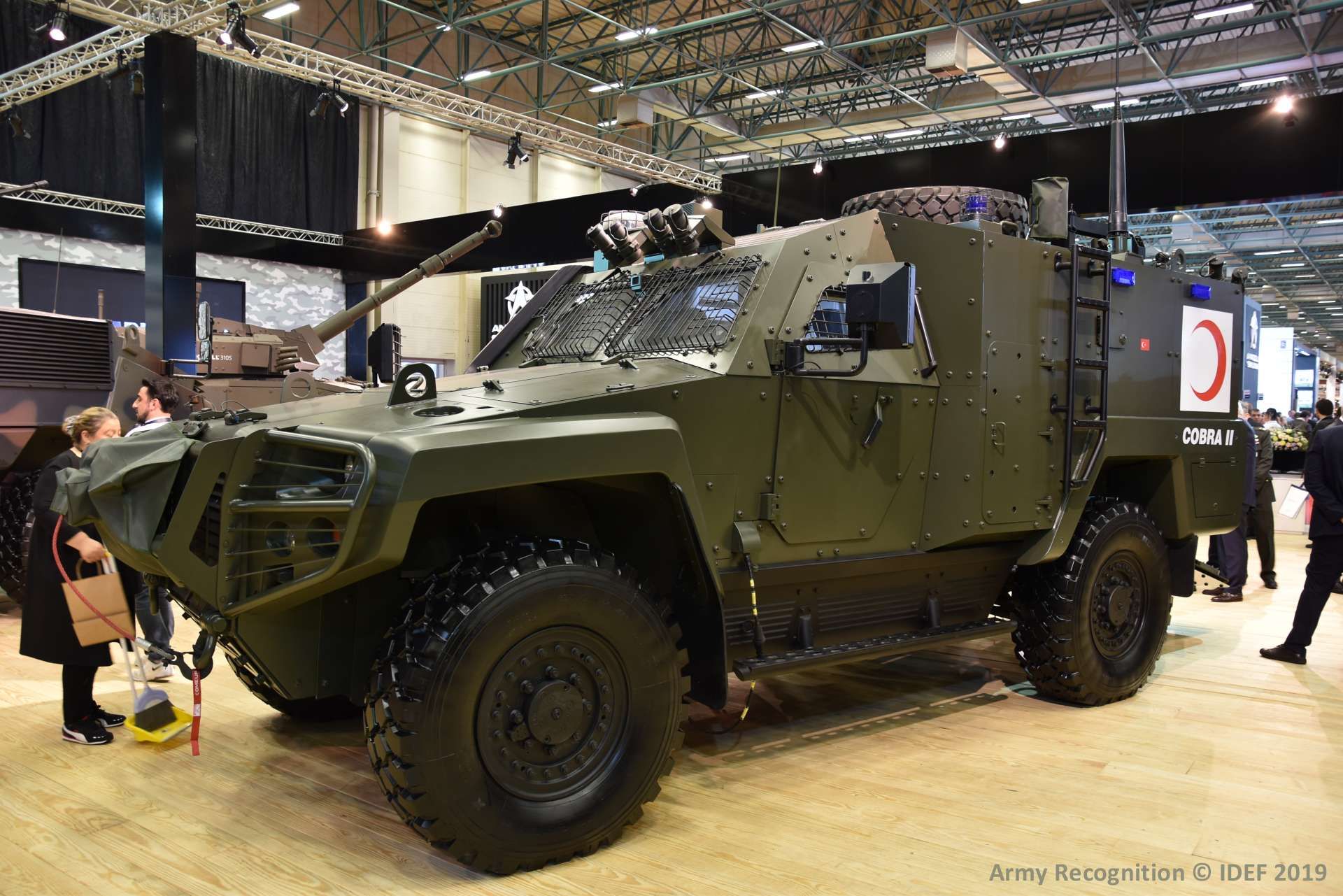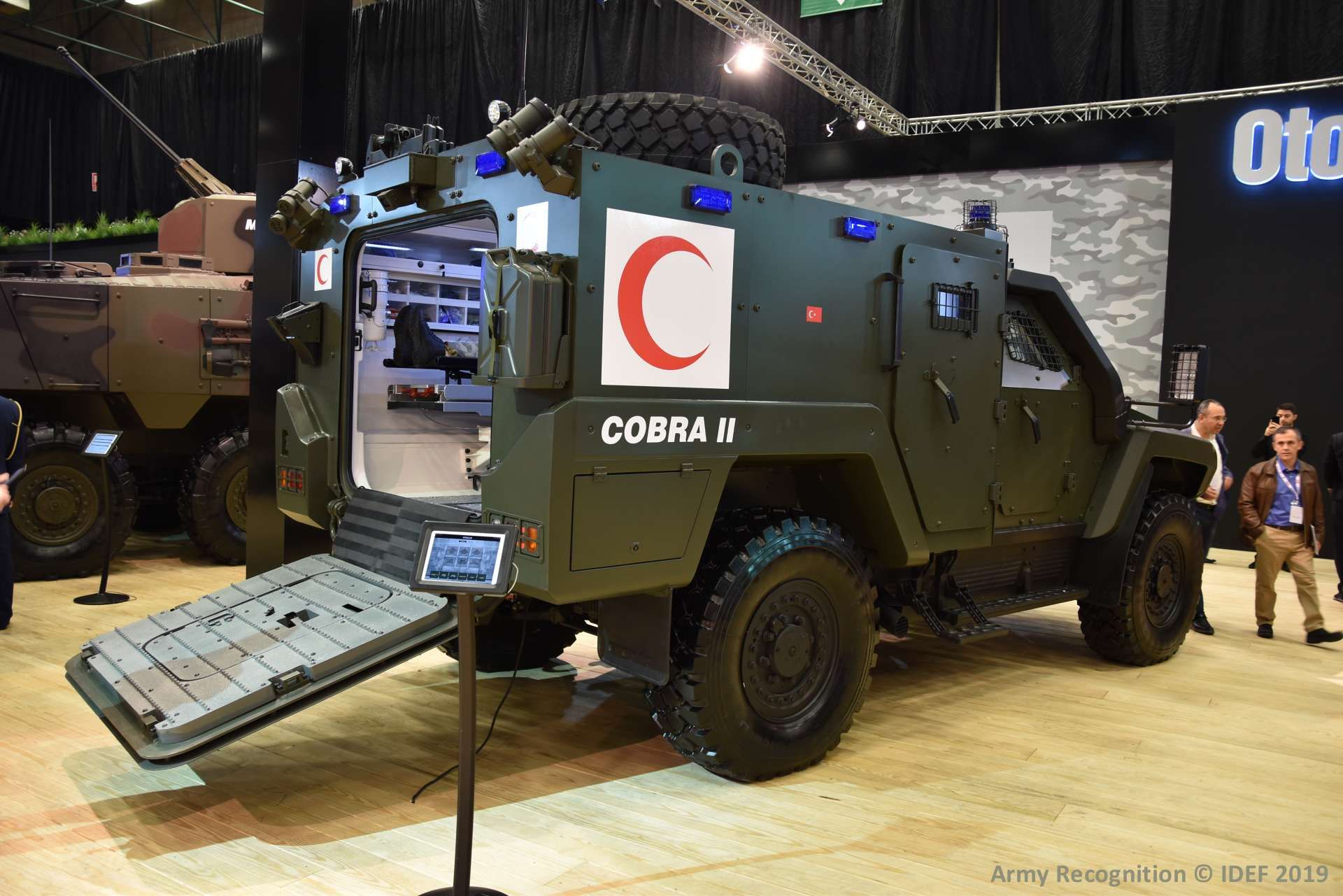Breaking News
Ukraine's Kursk Offensive sees first use of Turkish Cobra II Medical Evacuation Vehicle.
On August 19, 2024, Weapons Illustrated reported a likely first sighting of the Cobra II Medical Evacuation Vehicle in service with the Ukrainian Army, based on a video from the Kursk region. The vehicle, developed by the Turkish company Otokar, represents a potential enhancement of Ukraine's medical evacuation capabilities, as it appears to be the first instance of this specific medical evacuation vehicle being employed by Ukrainian forces.
Follow Army Recognition on Google News at this link

The Cobra II Medical Evacuation Vehicle represents a potential enhancement of Ukraine's medical evacuation capabilities, as it appears to be the first instance of this specific medical evacuation vehicle being employed by Ukrainian forces. (Picture source: Weapons Illustrated)
The Cobra II Medical Evacuation Vehicle was first introduced by the Turkish company Otokar during the IDEF 2019 defense exhibition. Otokar, known for its expertise in manufacturing armored vehicles, developed this variant of the Cobra II 4x4 armored vehicle to address the demands of medical evacuation in conflict zones. The Cobra II itself, introduced in 2013, was designed as an improvement over the earlier Cobra I model, featuring better mobility, increased payload capacity, and enhanced protection against ballistic and mine threats.
The medical evacuation version of the Cobra II incorporates several modifications to the standard vehicle to meet the specific requirements of its role. These changes include an increase in the vehicle's height and width, creating additional interior space for medical equipment and patient transport. The rear door has been designed as a ramp to facilitate the loading of stretchers, allowing for quicker and more efficient medical evacuations in combat situations. The vehicle can accommodate up to three patients, with configurations allowing for two sitting and one on a stretcher or two on stretchers, in addition to space for a driver, commander, and medical personnel.

The Cobra II Medical Evacuation Vehicle retains the protective features of the Cobra II platform, ensuring that medical personnel can reach and evacuate injured individuals from dangerous areas, providing necessary medical interventions while en route to medical facilities. (Picture source: Army Recognition)
The Cobra II Medical Evacuation Vehicle is engineered to operate in challenging terrain, including wet and muddy environments where conventional ambulances might struggle. The vehicle retains the protective features of the Cobra II platform, offering resistance to small arms fire, artillery shell fragments, and mine explosions. This level of protection ensures that medical personnel can reach and evacuate injured individuals from dangerous areas, providing necessary medical interventions while en route to medical facilities.
The Cobra II, with its combination of protection, mobility, and medical capacity, appears well-suited to fulfilling this role, as its modular design allows it to be adapted for various military roles, including troop transport, reconnaissance, and border security. The vehicle can also be configured for specialized missions, such as anti-aircraft and anti-tank operations. This adaptability has led to its deployment in multiple countries, including Azerbaijan, Bangladesh, and Ukraine.
The Cobra II is powered by a six-cylinder turbocharged diesel engine, enabling it to reach speeds of up to 110 km/h with a cruising range of 700 km. The vehicle includes features such as a central tire inflation system, run-flat tires, and an electronic management system, which enhance its performance in a range of operational conditions. Optional equipment, including smoke grenade launchers, an anti-lock braking system (ABS), and a CBRN filtration system, further extends the vehicle's operational capabilities.

The vehicle can accommodate up to three patients, with configurations allowing for two sitting and one on a stretcher or two on stretchers, in addition to space for a driver, commander, and medical personnel. (Picture source: Army Recognition)


























